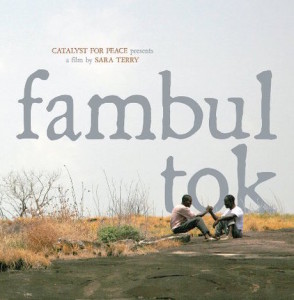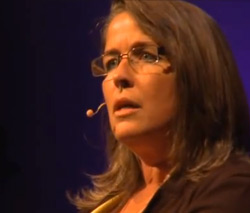We believe that those most impacted by conflict and violence can and should be the ones to lead in building their peace—and with the right space and support they will be able to do so strategically, successfully, and sustainably.
Authentic peace is built from the inside out.
An inside-out approach to building peace understands that the answers are there: the resources and leadership required to create and sustain peace already exist within the community itself, even when it has been devastated by conflict. When outside partners see the potential of local communities and create a safe space for that potential to emerge, it does. And when individuals inside that community see their own potential and capacity to address conflicts and respond to crisis, they generate the ideas, motivation, planning and progress toward peace. Engaged and empowered, they become the foundation of broader regional and national change.
‘Inside-out’ is different from a ‘top-down’ or ‘bottom-up’. While we emphasize the importance of local community ownership and leadership, the trajectory isn’t linear or vertical. We see individuals and the communities where they live as at the center of an interconnected system of concentric circles spanning from the local all the way through to regional, national and international levels. With distinct and important roles at each level, an ‘inside-out’ approach makes visible the ways leadership can be exercised at every level to support the health and generativity of the whole system.
There are ‘insiders’ and ‘outsiders’ at every level, from groups within a local community, all the way through to regional, national and international levels. With distinct roles at each level, there are also similar dynamics at work in the way those levels work together.
Unhealthy partnerships between local leaders and outside partners suppress or overlook local resources and contributions. Healthy insider/outsider relationships accelerate progress and unleash potential. Outside partners can create an initial space and process for communities to come together and define their needs, articulate their vision and develop their strategy for peace. Outsiders can support local leadership by providing constructive space for local people and communities to work through their own challenges and emerge with the strength for whatever comes next.
We must invest in people, processes and platforms.
For the past several years, Catalyst for Peace has honed an inside-out approach to peacebuilding on the ground in post-civil war Sierra Leone. In our unique hybrid role as co-creator and international funding and program partner for Fambul Tok, the national program of community-owned and led reconciliation, we have seen firsthand the transformative peacebuilding that local communities are capable of leading. We have been humbled and inspired by incredible stories of forgiveness and reconciliation as the communities have lived them out. And we have helped develop and shepherd the core program and organizational process and structure to support and sustain that.
We have supported and in turn learned from the consultative processes the Fambul Tok staff uses to forward the work on the ground. You can learn more about how that process works here. At the international level, we have focused our work on creating space for ongoing strategic planning and program design and development, nurturing and supporting national/local leadership, funding in a way that supports emergent design and organizational development, providing needed tools and training for capacity building, and documenting and sharing the powerful stories that have emerged from the work itself—across media and around the world.
We continue to walk with, and learn from, Fambul Tok. And today we know that locally led peacebuilding from the inside out requires:
- strong leaders from all parts of a society to advance the work,
- an emergent but clearly defined process and plan for how the work will be done, and
- flexible, durable platforms to support the work over the long term.
Learn more about the groundbreaking work of Fambul Tok, and the way it is modeling a large-scale, strategically impactful, fully locally-owned and led peace process.
The hard work of inside-out peacebuilding pays off in unexpected ways.
Strategic, sustainable inside-out peacebuilding asks more of its participants, but it is more effective and offers more rewards. Not only does a peace built from the inside out last longer—it strengthens and protects communities against future conflicts and crises. The very same people, processes and platforms that create and sustain peace can—and do—respond and adapt to outbreaks of political unrest, economic setbacks, disease, changes in leadership and more.
Today, we are eager to identify new ways that local leaders and their outsiders partners and supporters can come together to energize positive change. Knowing that individuals and communities do have their own answers, even in the midst of some of the most challenging situations, shapes how programs work and how people live their lives. If you or your organization are working to shift traditional insider-outsider roles and dynamics in peacebuilding, development and humanitarian aid endeavors, we invite you to be in touch. Together we can help this work grow.
As a US 501(c)3 private foundation, part of our work involves providing catalytic funding for inside-out peacebuilding practice, including storytelling that supports this practice. We do not accept unsolicited proposals.
Home page and current page banner image (c) Sara Terry for Catalyst for Peace






